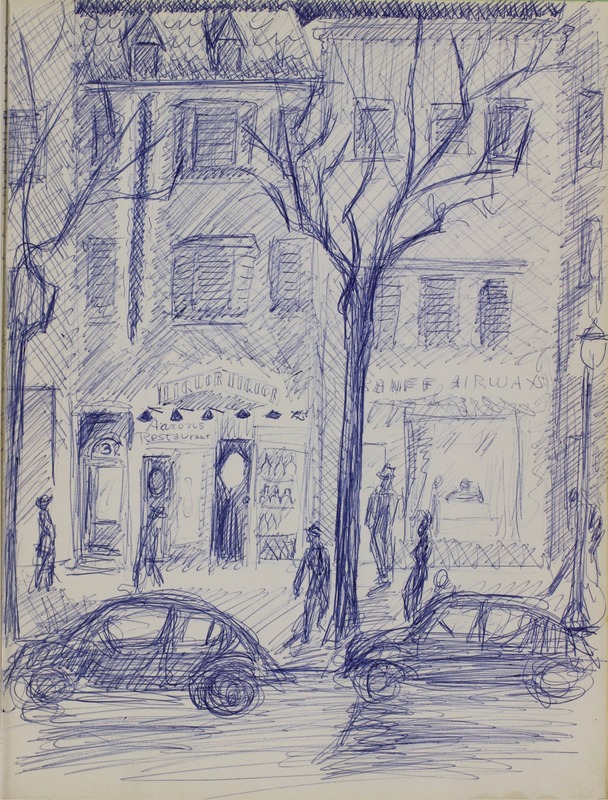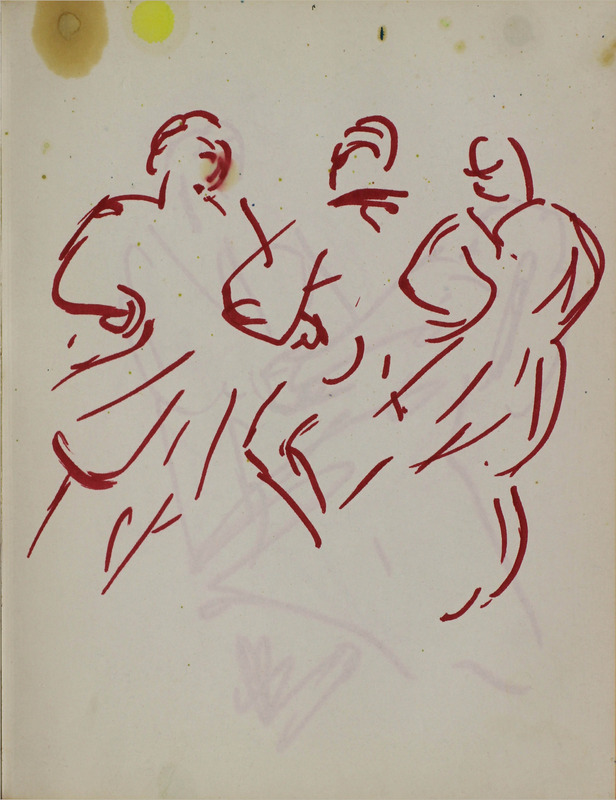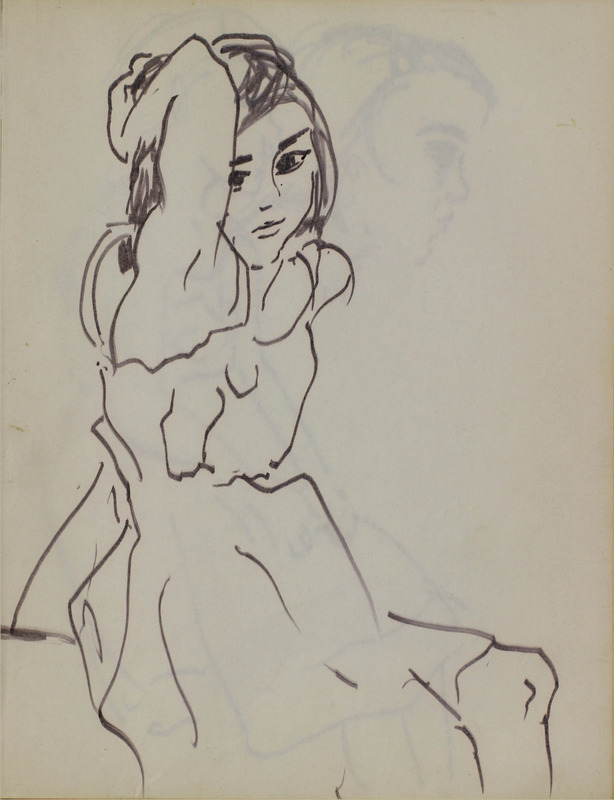Eunice Parsons & Process
Biography
Eunice Parsons was born in 1916 in Loma, Colorado but spent most of her young life in Chicago. When she was a young girl, she attended children’s classes at the University of Chicago where she learned an appreciation for art, as well as the skills that would allow her to pursue a career in the field later in life. After graduating high school, Parsons attended a few art classes from the University of Chicago. Soon after, Parsons married and moved to Portland along with her new husband. She spent the next two decades as a working mother. In the 1940s she began taking classes at the Portland Museum Art School. Shortly after, in 1957, she took a trip to the East Coast to acquaint and immerse herself in the culture of modern art. Parsons took a sketchbook where she made exhaustive notes and depicted many landscapes. This notebook showcases her earliest inclinations in playing with color, line, and shading, all developing into a unique and distinctive style. After returning from New York, Parsons continued her career as an artist and eventually began teaching at the Portland Museum Art School. While teaching, she became known as a blunt but brilliant instructor who encouraged her students to take their art seriously. She would also lead numerous student trips to Europe and the birthplaces of western art such as Italy, France, and Germany. In 2006 Parsons, along with others, was instrumental in opening the 12x16 Gallery in Portland. In 2017 she continues to be an influential and prolific artist at the age of 100.
Sketchbooks as a Medium
The sketchbook is situated as a place of safe practice and experimentation for the artist. It shows what the artist is looking to do removed from the constraints of more public work and beyond the eyes of critique. The sketchbook's private nature allows the artist extensive freedom to express and explore forms and concepts that might otherwise be neglected. Because of these conditions, the works that are found in a sketchbook reveal a glimpse into the inner workings of an artist's mind, showing more transparently what the artist is attempting to construct, while also giving a sense of why they might be making those choices. The sketchbook is similar to a diary in this way, the attempts at creation are shown in their most raw state. It is for this reason that they can be used to understand the process that is so key to creating works in the public sphere, as well as showing the preparations and resonances that occurred prior to those public works.
The Exhibition
Though Eunice Parsons is most widely known for her collages, which she began developing professionally in the late 1960s, this exhibit aims to uncover the precursory resonances that lead to the development of her more popular style through the lens of her personal sketchbooks. It is through investigating her interactions with process in her early career that the root of her collages can be understood. The culmination of several tendencies over the course of these three sketchbooks is the main subject of scrutiny. By examining the expressive qualities of Parsons' work through her usage of line, color, and shading that the ideology of her later collages can be understood. Through viewing selected images as examples of these trends, Parsons' stylistic development is illustrated along with commentary explaining the specific importance of each image to the greater series. These trends should be seen not from an evolutionary standpoint, but rather as a series of resonances which are present within Parsons' later work.


